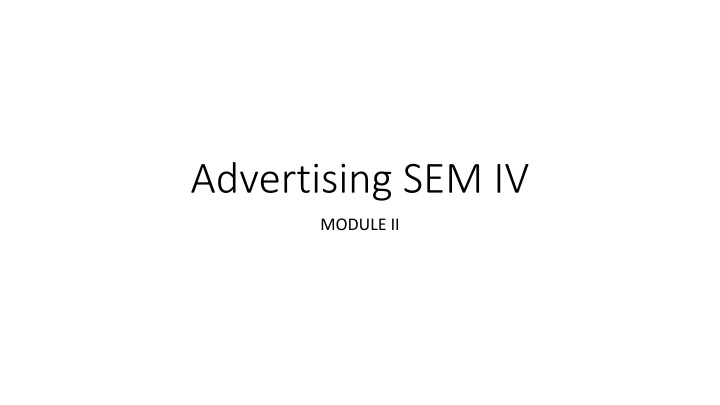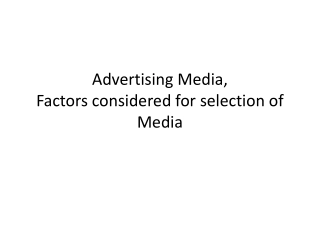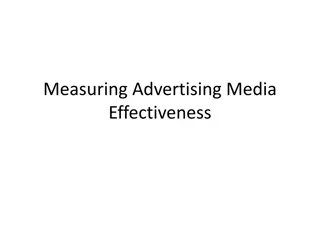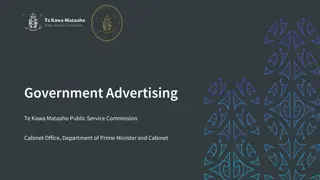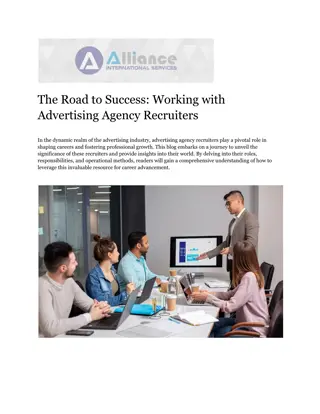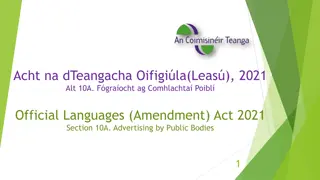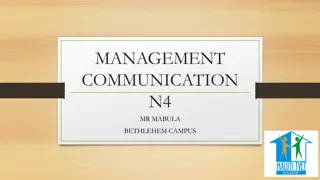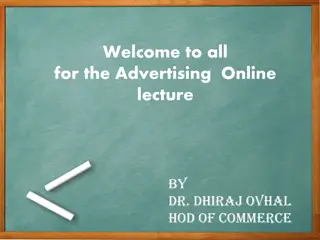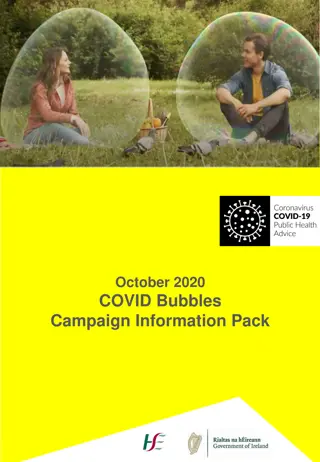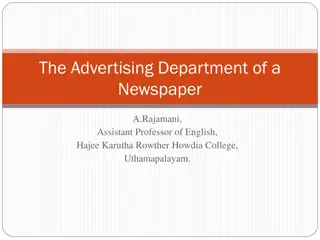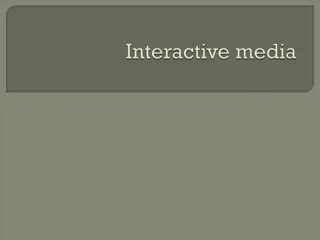Effective Campaign Planning for Advertising Success
Planning a successful advertising campaign involves defining a common theme, setting objectives, conducting thorough research, selecting the right media mix, designing messages, obtaining client approval, executing the campaign, and gathering feedback. The DAGMAR model emphasizes the importance of setting measurable communication goals, while objectives may focus on communication, sales, or increasing competitive strength. Budgeting plays a crucial role in determining the resources required for advertising activities, considering factors like competition, target audience, market area, company size, and available funds. Various methods, such as fixed percentage, unit of sales, and competitors' expenditure, can be employed to allocate the ad budget effectively.
Download Presentation

Please find below an Image/Link to download the presentation.
The content on the website is provided AS IS for your information and personal use only. It may not be sold, licensed, or shared on other websites without obtaining consent from the author.If you encounter any issues during the download, it is possible that the publisher has removed the file from their server.
You are allowed to download the files provided on this website for personal or commercial use, subject to the condition that they are used lawfully. All files are the property of their respective owners.
The content on the website is provided AS IS for your information and personal use only. It may not be sold, licensed, or shared on other websites without obtaining consent from the author.
E N D
Presentation Transcript
Advertising SEM IV MODULE II
Campaign Planning: Meaning and Features Campaign : Series of advertisements having a common theme For long time 4 months, 6 months, 1 year Common Theme Continuity Definite objective
Procedure Research of market, media, competitors advertisement Objective of Campaign Target Market Budget Media mix selection Scheduling of media Message designing Client approval Execution of Campaign Feedback
DAGMAR model Defining Advertising Goals for Measurable Advertising Results 1961 Introduced by Russell Colley Main idea: success of advertising depends upon its communication. Hence it is necessary to communicate effectively through advertising with definite goals.
Objectives Communication objectives: Inform, awareness Convince Aptitude-positive Brand Loyalty To educate To develop Reputation T o increase competitive strength Sales objectives: Increase sales/demand Increase Profit Variety of product No. of customers Mkt. Expansion Widen distribution network Reputation Free samples: experience
AD. Budget Estimate of future activity, income /expenditure Units / money single use plan Sales, purchase, material Generally 1 yr. Universal Future oriented
Ad. budget Big amount Investment Ad. is a basic activity/ imp. Activity
Factors influencing Ad. budget Competition Target for sales Target audience Quality Market area Frequency Size of Company Funds
Factors. Management philosophy Product stage of a particular product/ service Media mix Time and place in media Past advertising expenses Media charges Celebrity
Methods 1. Fixed Guideline Method: Logical, scientific, simple. A. % to sales estimated sales in terms of rs.. Estimated sales---rs.10,00,000/, 1% of estimated sales. budget =rs. 10k B. Unit of sales method: 30,00,000 units., ad. budget rs.0 . 20/ per unit = 6 L c. Competitors expenditure method: d. Share of market method : 1 2 3 4 5 50% 10% 25% 5% 10% Mkt. share
Methods Ad. Budget 2. Task method : objective 3.Subjective: No fixed base management takes decision Arbitrary---management All you can afford---assets, profit Go for broke----remaining least importance to advt.
Media Planning---media mix Target audience Deciding Media objectives---Media Reach, Media Frequency , Media Coverage. Selection of Media Mix combination/ blending Selection media vehicle--- programme , time, place, type of news paper Budget Allotment of funds- Media scheduling---Bursting , Flighting, Alternate month, Seasonal 2,Pulsing. Placing of Ad. copy ready-design story board, availability, video, recording., client approval. Feedback, revise tests--research
Media Buying Meaning: Buying/ booking a slot in particular medium.-time/ place Ref media mix Client approval media, vehicle Contact media people Check Availability Media charges Negotiating Client approval Agreement media people
Media Objectives Audience Objectives: exact target audience. Message Distribution Objectives: Media Reach/ circulation : No. of people/households getting exposed to a particular medium. Media Frequency : No of times.. at which people get exposed to a particular medium Gross Rating Points : Reach multiplied by frequency Continuity : % of budget allotment at every month/ period
Factors influencing Media selection Target Audience Type of product Competitors strategy Campaign Objective Ad. Budget Media Image Media Cost Media Circulation Frequency of media
Media Scheduling Strategies Bursting : Heavy advertising initially Flighting : Advertising with gap--hietus Pulsing: High..low advertising Seasonal: Step up, Step down Steady : Equal every month/ period Alternate month.
Questions What do you mean by Ad. campaign? Explain with salient features. Examine the process of campaign planning Write detailed note on DAGMAR model Distinguish between Communication Objectives and Sales Objectives. Explain Communication objectives Explain sales objectives What are the factors influencing Ad. Budget
Questions.contd What are various methods of budgeting for Ad. expenses? Write a note on Fixed Guideline method of Ad. budget What is media planning. Explain its procedure. Explain various media objectives. What are various media scheduling strategies ? What factors are considered in selection of media? Define Media Buying . Write the process of Media Buying.
